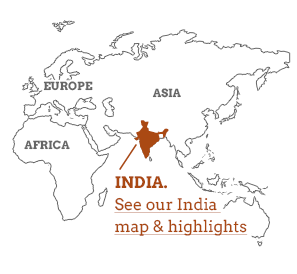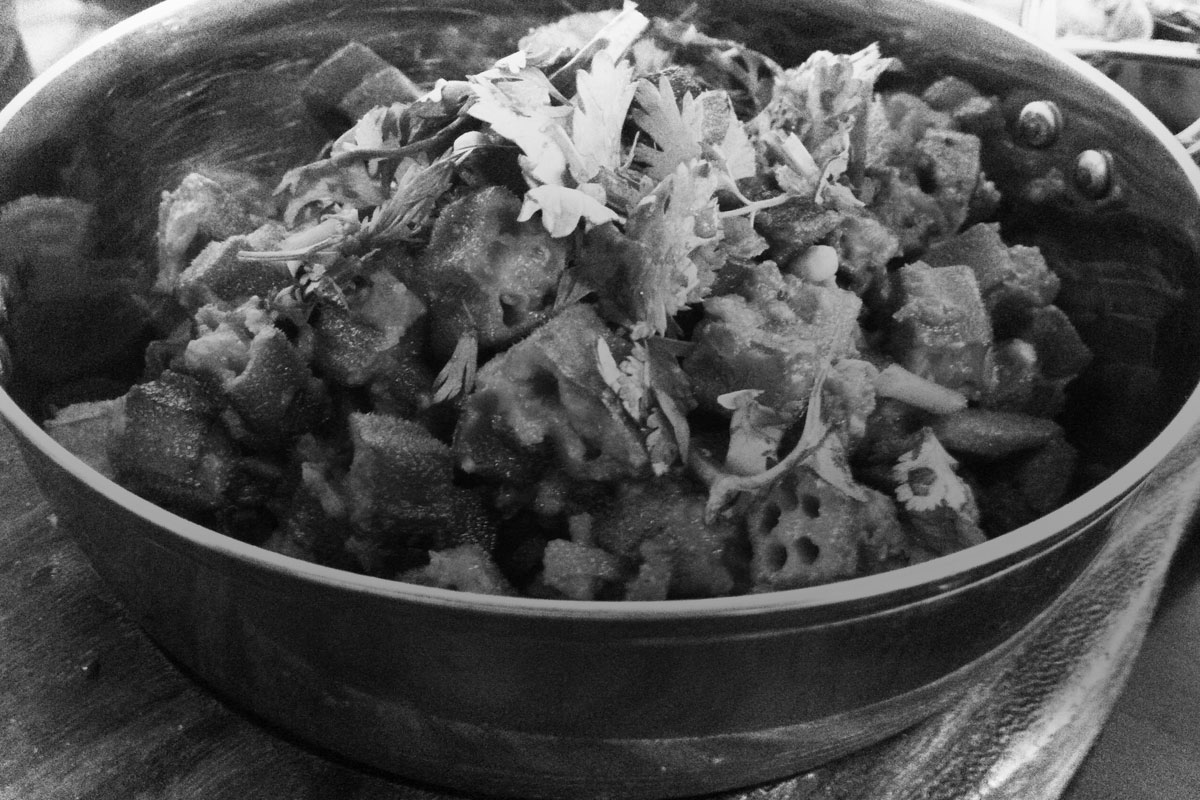India travel guide

Some people are overwhelmed the minute they pick up their first India travel guide. But India doesn't need to be seen in one go. Think of it like a box of exquisite handmade chocolates. You wouldn’t cram them all in at once. You would read the ingredients, savour each one, relishing the taste of every parcel presented to you. Taking it slowly is the best way to see this vast country.


There's an expression in Hindi - Aaaram Se, meaning to 'chill out'. It is the rule of thumb in India. Because if you 'Aaaram Se' - good things will come your way.![]()

The Golden Triangle is the one that always jumps out first from the chocolate box, with Delhi, the Taj Mahal and Jaipur offering palaces, princes, mughals and mystery. However, the remote beaches versus the resorts of Goa and Kerala are like the difference between a Mars Bar and a Montezuma, and the hiking to be had in Ladakh is like the surprise secret layer you never realised was there. In fact, that’s the thing about India. Go one step off the tourist trail, and you will find that the layers just go on forever.
Warning: This video contains flashing lights
India
is/isn't
is/isn't
India is...
romantic, impressionist and surreal. All in a day.
India isn't...
predictable.
What we rate & what we don't
Underrated
Ladakh
Ladakh means "land of high passes", the height being the Kunlun and Himalayan mountains, which ‘pass’ through Jammu and Kashmir state. Trekking tourism has always been important even during the Kashmir conflicts, with a strong military presence to protect it. It is culturally fascinating with a mix of Tibetan Buddhists and Shia Muslims living in landscapes equally contrasting, from desert to remote mountain peaks.
High quality crafts
With many bazaars now a place for touts and tat, the tradition of fine arts is off radar for many visitors. India has a long history of royal patronages for fine art, and there are exceptional handicrafts here which are important to sustain. Such as traditional hand lacquered ceramics, fine embroidery, hand woven pashminas as opposed to mass produced machine woven ones. Jaipur and Jodphur are top cities for top crafts.
Hiking in the Ghats, Kerala
Few people associate Kerala with mountains, the Himalayas monopolising the western desire for elevated landscapes in most India travel guides. Kerala’s Western Ghats range is rapturous for hikers and bikers, however. Named as a world Biodiversity Hotspot, it’s a daily festival of flora and fauna here. Plus there is no snow in winter and the beaches are never far away.
Tribal communities
Go east into the states of Chhattisgarh and Odisha to discover some of India’s tribal communities which are now, with the help of responsible tour operators, inviting guests in to their homes. Such as the Gotuls in Kanker, the Muria tribe in Jagdalpur and the Bonda tribe in Odisha, most of whose cultures and traditions haven’t changed for thousands of years.
Rated
Taj Mahal
The Taj Mahal is a white marble mausoleum built by the grieving Mughal Emperor Shah Jahan in memory of his late wife, and an extraordinary oasis of peace and exquisite beauty in the chaos of India. Visit with an expert tour operator or local guide, who can bring you here at the best times to avoid the touts and tourist madness. Some say it’s best at sunrise, with a cuppa.
Rajasthan
Rajasthan is probably one of the best places if you are a newbie to India, fulfilling all fantasies you might have about India. With maharajas, pink palaces, camels in the streets, desert sunsets, fine artisanal crafts, and multi-coloured temples. It’s the whole gamut of gorgeousness.
Rural India
Many don’t venture beyond the Golden Triangle, national parks or bustling bazaars. But in some tourism honeypots the honey is no longer as sweet, the culture watered down a little for tourists. By visiting rural villages and lodging in homestays, you might think you are stepping out of your comfort zone. In fact, you’ll simply be celebrating that long lost travel art of accepting the comfort of strangers.
Southern India
You have not ‘done’ South India by just going to Kerala. Consider combining your trip with a few days in neighbouring Karnataka or Tamil Nadu to get a 3D picture of what south India really is. Such as the The Mudumalai National Park in Tamil Nadu’s Nilgiri Hills or Bandipur National Park in Karnataka, not forgetting the historical hub of Mysore.
Overrated
Indian beach culture
Going to the beach is not actually a big part of Indian culture like in the Caribbean, for example, so there is a tendency for western style resorts, with a flatpacked, fastfood feel about them. Such as Kovalam beach in Kerala, and the Candolim-Calangute areas of Goa. Head of the beaten track, however, and there is lots of littoral loveliness to be found.
Pseudo yoga
India is the pinnacle of most yoga practitioners’ journeys in life, Kerala being a top place to practice with its history of Ayurveda. However, be aware that there is a lot of bandwagon stuff going on in India, with some yoga retreats more focused on the principles of marketing than any traditional principles of yoga, so do your research well.
Riding on elephants
As you will see from our ‘Elephants in tourism’ guide, Responsible Travel does not endorse elephant riding. However, we do recognise that in some national parks, the survival of the remaining tigers is simply too precarious to risk withdrawing the funding gained through elephant rides from the park; to do so would risk an instant increase in poaching and the demise of the species.
Tiger mania
They are extraordinary, elusive and endangered, and it is extremely moving to see one. But there is a sort of mania among tourists, particularly Indians themselves, to catch just one glimpse of the big cat, when actually conservationists will constantly remind you that there are also lions and bears here. Along with Asian lions, sloth bears, leopard, elephants, buffalo, rhino, monkeys, wolves and a veritable fiesta of birdlife.
Golden Triangle with Ranthambore tour, India
Brilliant experiences including Tigers and Temples
From
£1199 to £1299
11 days
ex flights
Kerala tailor made vacation, 11 days
Revitalize in Kerala - A most wonderful and balanced trip
From
£1349 to £1779
11 days
ex flights
Community volunteering in Kerala
Travel and teach in the gorgeous sunshine state
From
US $1295
4 weeks
ex flights
Southern India small group vacation
Discover the two southern most states of India
From
US $1750 to US $2100
14 days
ex flights
Kerala homestay tour, India
Stay in homestays in various destinations in Kerala
From
£2270
16 days
inc UK flights
Tiger watching vacation in India
A chance to see the majestic tiger in the wild
From
£1300 to £1450
9 days
ex flights
Travel Team
If you'd like to chat about India or need help finding a vacation to suit you we're very happy to help.
1-866-821-6866
Call toll free
Calling from outside the USA
Food, shopping & people
Eating & drinking in India
If you want to eat chaat, North Indian street food, Delhi is the place to be.
Thali is like Indian tapas, with a collection of small bowls of different foods (katori) served on a round tray
Each region has its own lassi. Such as Makhani lassi in Rajasthan made from buffalo butter, essential oils, and yoghurt. But, in Punjab, it is more frappé style.
In Kerala, don’t miss the seafood, from the coast or backwaters.
People & language
Aap keise hain? = How are you?
Hindi is the main language in India, although English is taught in many schools, and is widely spoken or understood. There are 21 other official languages, from Urdu to Gujarati, Bengali to Kashmiri.
Namaste is the main greeting but it has become almost a cliché that this is the only thing tourists know what to say. Stretch your skills and be brave with just a bit more:
Dhanyavad = thank you, although not used willy nilly in India, so don’t think local people rude if they don’t say it
For a more formal, ‘thank you from the bottom of my heart’ say ‘Shukryia’ , from Urdu.


Indian food in the west is usually Punjabi or Gujarati, but each region has a different cuisine. For epicurean excellence, check out Mughlai or Rajput cuisines. ![]()

Gifts & shopping
In Rajasthan, check out splendid textiles designed by hand using wooden blocks
For high quality handicrafts, state emporium Baba Kharak Singh Marg, Delhi is a must
Byloom in Calcutta is a wonderful tailor supporting small handlooms all over west Bengal
Hand lacquered products from bowls to bangles originate in India, with lac insects that secrete the main ingredient indigenous to India
For genuine handmade pashminas, made from pashm goats’ hair, go to Srinagar, Kashmir. Around £150
Buy spices from markets. The spice gardens are very overpriced
If tea is your chosen cuppa, it grows on trees here
For high quality handicrafts, state emporium Baba Kharak Singh Marg, Delhi is a must
Byloom in Calcutta is a wonderful tailor supporting small handlooms all over west Bengal
Hand lacquered products from bowls to bangles originate in India, with lac insects that secrete the main ingredient indigenous to India
For genuine handmade pashminas, made from pashm goats’ hair, go to Srinagar, Kashmir. Around £150
Buy spices from markets. The spice gardens are very overpriced
If tea is your chosen cuppa, it grows on trees here

Many north Indian bazaars now just cater for tourists, and have become very contrived. You need to go into really small towns to find the more traditional, local bazaars.
![]()

How much does it cost?
Fresh coconut: 20p-25p
Glass fresh toddy: 50p at a rural bar
Train Delhi-Agra: £10 or £20 1st class
Kilo of mangoes: £2
Bottle beer: £1-£2
Good quality thali lunch - £3.50
Glass fresh toddy: 50p at a rural bar
Train Delhi-Agra: £10 or £20 1st class
Kilo of mangoes: £2
Bottle beer: £1-£2
Good quality thali lunch - £3.50
A brief history of India
Bollywood films are sometimes hard for westerners to get their head around, but when you start to read up on Indian history, you realize why they love to celebrate melodrama, heroes, villains, fate and fortune, epic themes of attack and revenge, as well as copious poetry, dance and music. Because history has doled out fair doses of all of these over the centuries in India. Going way back, There is still evidence of the ancient Indus Valley civilisation in India, such as the ruins seen at Dholavira in Gujarat, with people coming here from present day Pakistan, Afghanistan and Iran, as far back as 2600 BC. Read more




























































